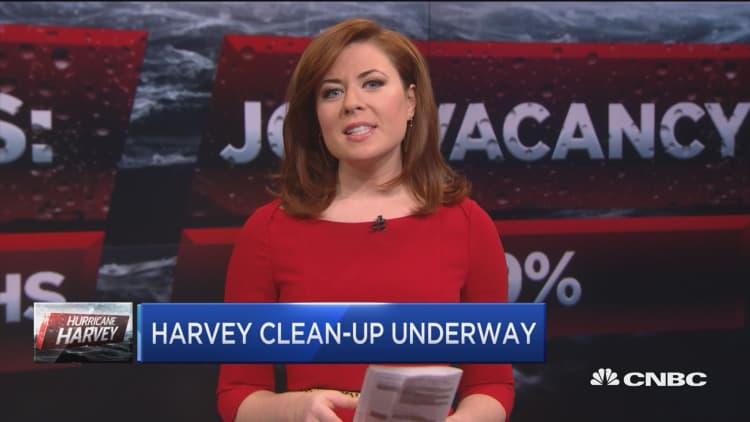Massive flooding and disaster like the damage seen in the wake of Hurricane Harvey in Texas can be make-or-break for small businesses. In fact, according to the Federal Emergency Management Agency, some 40 percent of small businesses never reopen their doors after a disaster because the cost of recovery is too great to bear.
What's more, not every small business has flood insurance. According to the Insurance Information Institute, most small businesses are covered under what's known as a business owner policy, or BOP, which does not include flood insurance. That coverage can be obtained through the National Flood Insurance Program or through an excess flood insurance policy with a participating carrier. Commercial policies often include flood coverage.
Business owners that are in a disaster area may also be eligible for financial assistance from the U.S. Small Business Administration.
The SBA has physical disaster loans available, as well as economic injury loans for small businesses, both with loan caps of $2 million. The program has already kicked in for the Houston area as a disaster declaration has been made by President Donald Trump.
"The SBA stands ready to assist Texas businesses and residents for the long-term as they recover from the devastation caused by Hurricane Harvey," the SBA told CNBC in a statement.

Hurricane Harvey's price tag is still not yet known, but estimates from AccuWeather are pegging the total at some $190 billion, higher than Hurricane Katrina's $160 billion in 2005. After that storm, along with Rita and Wilma in the Gulf Coast, the SBA approved 160,809 disaster loans for a total of $10.9 billion, with a loan approval rate of 45 percent. After Hurricane Sandy in 2012, the SBA approved 36,918 loans for a total of $2.5 billion, with a loan approval rate of 53 percent.
And while the support is coming through the SBA, designed to help small businesses, the majority of SBA disaster loan approvals typically go to homeowners and renters, the agency said. The Small Business Act of 1953 gave the SBA authority to make disaster recovery loans to homeowners, renters, businesses of all sizes and nonprofit organizations. Homeowners can apply for disaster assistance of up to $200,000, and renters are eligible for a maximum of $40,000.
The SBA does not make damage estimates, so it's unclear just how many loans may be needed at this point, but according to a release from FEMA early Friday, the SBA had received 2,118 disaster loan applications, primarily for homes. The SBA has also fielded 5,221 calls and completed 451 property damage inspections.
It is important for small-business owners, homeowners and renters alike to get their claims in as soon as possible, as loan approvals can take up to four weeks, according to the SBA.


